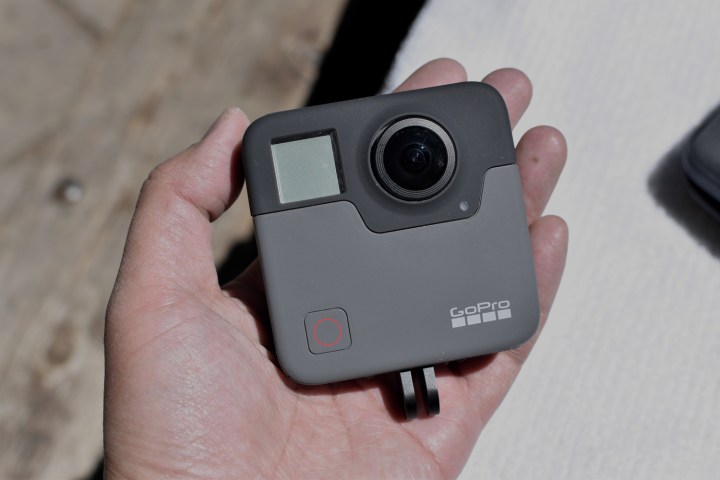
The GoPro Fusion, which is currently in the hands of select content creators as part of a pilot program, is the GoPro’s first all-in-one 360 camera. Standing not much taller than a GoPro Hero5 Black, it is meant to be mounted in much the same way as a regular action camera, transforming athletic feats into immersive experiences that anyone can share in. But where most 360 cams use a back-to-back lens design, the Fusion’s lenses are offset slightly.
GoPro claims this allows the company to use higher quality lenses, which tend to be longer, without the front elements protruding too far from the camera body. Apparently, it also makes it easier to clearly capture a full 360 degrees, as back-to-back lenses would actually have a larger disparity between the two fields of view.
The real magic comes in the form of GoPro’s new D.WARP stitching algorithm, which is responsible for blending the two ~180-degree fields into one 360-degree frame. (In reality, each lens captures more than 180 degrees, allowing for some overlap in the stitching process.) D.WARP works by judging depth and can reduce artifacts that would otherwise occur due the slight difference in perspective between the two lenses. The result is a more natural appearance of objects in the frame, even when very close to the camera. It is the first content-aware stitching algorithm to be used commercially, and GoPro says this places it on the cutting edge of immersive video technology.
After stitching, the camera also applies blending to even out exposure and contrast differences that naturally occur between the two video fields. Poor stitching and blending can lead to a distracting experience, and with 360 video’s focus on immersion, that’s definitely not something you want.
We have yet to see how good the Fusion will be in the real world, but GoPro seems confident that it will be at the head of the pack just as the Hero5 Black is in fixed-frame action cameras.



